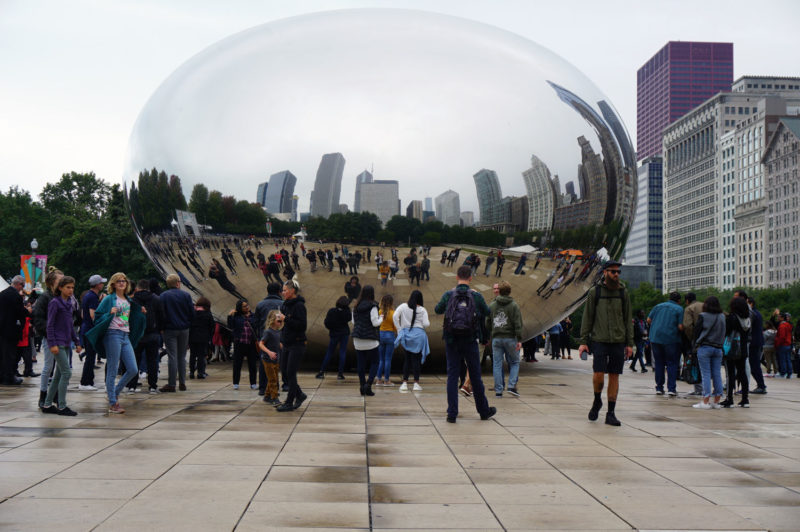Before it was nicknamed “The Bean” and became one of Chicago’s most visited tourist attractions, the massive, mirrored Millennium Park sculpture formally named Cloud Gate was intended to serve a more meditative and transcendental end.
Sculptor Anish Kapoor, when commissioned to design the work, was given to understand that Cloud Gate would be sited in the Lurie Garden, a beautiful prairie-style landscape occupying a secluded section of Millennium Park.
Had Cloud Gate ended up there, visitors would have seen themselves reflected in a glorious natural setting. The city would have appeared as ancillary to nature, an inconsequential detail in the human journey through life.
Ultimately, the massive sculpture was deemed too large for the Garden. Given the large crowds that the sculpture attracts, this judgment was wise. Had the Bean ended up in the Garden, the garden, with its peaceful swathes of wildflowers and grasses, would have been destroyed.
Instead, Cloud Gate was sited on a bare concrete slab, at a remove from nature and closer to the city’s skyscrapers than originally planned. In the reflections that play across its surface, nature is negligible; the city looms large.
Yet, to those with eyes to see it, the Bean still telegraphs a grander drama of transcendence and oneness. All-embracing and all-encompassing, Cloud Gate represents each of us as participants in a strange mystical experience. Tourists to a man, we may amble through cluelessly, unaware but suitably filled with wonder and awe.


Harley says
Wow, what a psychadelic picture ! I like it ! Nice caption.
Celia says
Thanks, Harley; I love this picture, too.
Ron Scubadiver says
I am so addicted to this place.
Celia says
A photographer’s paradise . . . and the people are so actively filled with wonder–I love that.